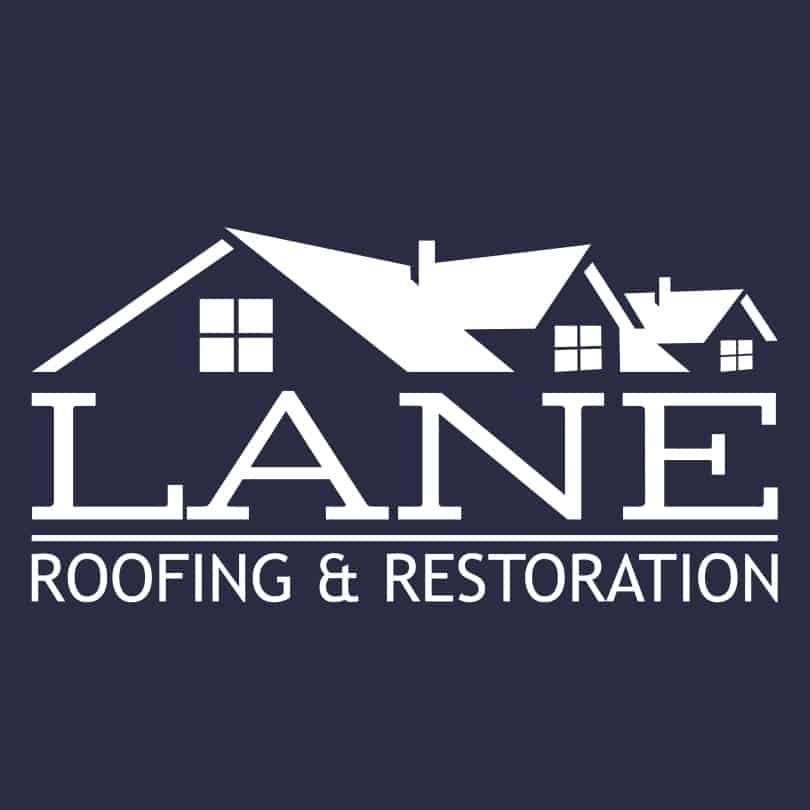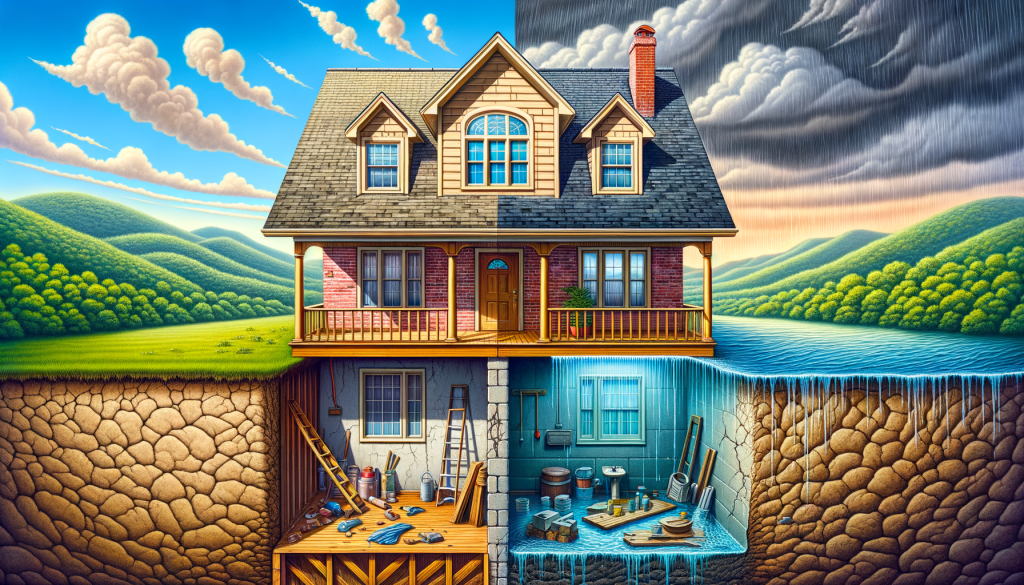When you think about protecting your home, what comes to mind first? Perhaps your security system, sturdy doors, or quality windows. But there’s another critical defender working quietly above your head – your roof and its drainage system. In Asheville and throughout Western North Carolina, where we experience everything from summer downpours to winter freezes, proper roof drainage isn’t just about preventing leaks – it’s about safeguarding your home’s very foundation.
Here in the Blue Ridge Mountains, we face unique drainage challenges that homeowners in flatter regions don’t encounter. Our sloping terrain and varied precipitation patterns create perfect conditions for water damage when roof drainage systems fail. At Lane Roofing and Restoration, we’ve seen firsthand how improper drainage can transform a minor issue into a major structural problem, especially as water makes its way down our mountainous landscape toward home foundations.
The Critical Connection Between Roof and Foundation
Your roof and foundation might seem like distant relatives in your home’s anatomy, but they’re actually intimately connected. Water that falls on your roof needs somewhere to go, and that journey ultimately impacts your foundation.
When functioning properly, your roof drainage system collects rainwater and melting snow, channeling it through gutters and downspouts away from your home. This water is directed to appropriate drainage areas where it can safely disperse without causing damage.
However, when this system fails, water can cascade directly from your roof edge, creating a waterfall effect that pounds the soil at your foundation. Over time, this water erodes the soil and can begin to seep into your foundation, causing a domino effect of problems.
Common Roof Drainage Problems in Western North Carolina
Our local climate and geography create specific challenges for Asheville homeowners. Some of the most common roof drainage issues we encounter include:
Clogged gutters and downspouts: Our abundant trees shed leaves, pine needles, and other debris that quickly fill gutters. When water can’t flow freely through the system, it spills over gutter edges directly onto foundation areas.
Insufficient downspout extensions: Many homes have downspouts that empty too close to the foundation. In Asheville’s hilly terrain, this problem is magnified as water naturally flows downhill toward the foundation.
Improper roof pitch: Some homes, especially older ones or those with complex roof designs, may have areas where water pools rather than flows off. These areas eventually lead to roof leaks, but long before that, they can cause overflow issues during heavy rains.
Eroded soil around foundations: After years of improper drainage, the soil around many Asheville homes becomes eroded, creating negative grading that actually funnels water toward the foundation rather than away from it.
Ice dam formation: Our winter freeze-thaw cycles create perfect conditions for ice dams, which block proper drainage and force water under shingles and eventually into your home’s structure.
Warning Signs Your Drainage System Is Affecting Your Foundation
How do you know if your roof drainage is compromising your foundation? Look for these telltale signs:
Basement or crawl space moisture: Dampness, musty odors, or visible water in your lower levels often indicate that water is penetrating your foundation.
Erosion channels: Distinct paths in the soil leading from downspouts toward or around your foundation show where water is flowing heavily.
Foundation cracks: Small cracks can develop into serious structural issues as water seeps in, freezes, and expands during our cold Asheville winters.
Settling or uneven floors: When water weakens your foundation, your home may begin to settle unevenly, leading to sloped floors, stuck doors, or cracks in drywall.
Mold growth: Especially common in our humid climate, mold along lower walls often indicates water intrusion related to foundation issues.
Peeling exterior paint: When water consistently runs down siding due to gutter overflow, paint begins to bubble and peel.
The Domino Effect: How Drainage Problems Escalate
What starts as a simple clogged gutter can quickly become a costly foundation repair. Here’s how the damage typically progresses:
First, water overflows from blocked gutters or malfunctioning drainage components. This water saturates the soil immediately surrounding your foundation. The saturated soil expands, placing pressure against foundation walls in what experts call “hydrostatic pressure.”
Over time, this pressure can crack concrete or shift foundation blocks. Water finds its way through these cracks, especially during Asheville’s heavy rain events. Inside your basement or crawlspace, this moisture creates perfect conditions for mold growth and wood rot in floor joists.
Left unchecked, foundation walls may begin to bow or shift. Upper levels of the home then experience effects like sticky doors, cracks in drywall, and uneven floors. In severe cases, structural integrity becomes compromised.
What began as a simple maintenance issue with your roof drainage has now become a five-figure foundation repair. This is why we stress preventative maintenance so strongly with our Western North Carolina clients.
Effective Solutions for Asheville Homes
The good news is that most roof drainage issues can be fixed relatively easily when caught early. Here are effective solutions that work particularly well for homes in our area:
Regular gutter cleaning and inspection: In Western North Carolina’s heavily wooded areas, we recommend cleaning gutters at least twice yearly—once after spring pollen season and again after fall leaf drop. Consider gutter guards if your home is surrounded by trees.
Proper downspout extensions: Downspouts should discharge water at least 6-10 feet from your foundation. For homes on slopes, this distance may need to be greater to prevent water from flowing back toward the foundation.
French drains and dry wells: For properties with persistent drainage issues, these systems can capture water from downspouts and redirect it safely away from your home, working with rather than against our mountainous terrain.
Proper grading: The soil around your foundation should slope away from your home at a rate of about 1 inch per foot for at least 6 feet. This can be challenging on some Asheville lots but is crucial for foundation protection.
Seamless gutters: These reduce leaks at seams and are particularly valuable in our climate where freeze-thaw cycles can stress traditional segmented gutters.
Ice dam prevention: Proper attic insulation and ventilation help prevent the formation of ice dams during winter, ensuring continuous drainage even during cold snaps.
A Real-World Asheville Example
Recently, we worked with a homeowner in North Asheville whose 1940s home had developed concerning cracks in the foundation. Upon inspection, we discovered that decades of improper roof drainage had eroded the soil around one corner of the home, creating a depression that collected water rather than channeling it away.
Our solution involved installing new seamless gutters with increased capacity (5″ to 6″), extending downspouts significantly farther from the house, and implementing a French drain system that worked with the property’s natural slope to direct water to a drainage area at the back of the lot.
The homeowner reported that after the first heavy rain following our work, their previously damp basement remained completely dry. While they still needed some foundation repair, preventing further water damage stopped the problem from worsening and saved them thousands in potential structural repairs.
Preventative Maintenance: The Key to Protection
The most cost-effective way to avoid foundation damage is through regular preventative maintenance of your roof drainage system. We recommend Asheville homeowners:
Schedule semi-annual gutter cleanings: Spring and fall are ideal times in our region.
Inspect drainage during heavy rains: Watching how water flows during a downpour can reveal problems before they cause damage.
Check downspout discharge points: Make sure they remain clear and that water continues to flow away from your foundation.
Address ice dams promptly: If you notice ice building up on your roof edges during winter, it’s important to address the underlying causes before water damage occurs.
Consider a professional roof inspection: Having experienced local roofers examine your entire roof system can catch drainage issues before they become visible from ground level.
When to Call a Professional
While some maintenance tasks can be handled by homeowners, certain situations call for professional expertise. Consider contacting a local roofing professional like Lane Roofing and Restoration if:
You notice sagging or damaged gutters that need replacement. Your home has complex drainage needs due to its position on a hillside. You’ve discovered water in your basement or crawlspace despite basic drainage maintenance. Your gutters frequently clog despite regular cleaning (you may need a different gutter protection system). You’re planning to remain in your Asheville home long-term and want a comprehensive drainage solution.
Remember that roof drainage isn’t just about preventing leaks – it’s about protecting your entire home, from rafters to foundation. In Western North Carolina’s variable climate, this protection is especially important.
Looking Forward: Protecting Your Home for Years to Come
Your roof drainage system might not be the most exciting part of your home, but it’s certainly among the most important. By understanding the critical connection between what happens at your roofline and what happens at your foundation, you can prevent costly damage and protect your Asheville home for decades to come.
The unique challenges of our mountain environment make proper drainage even more crucial than in many other parts of the country. By working with local experts who understand these challenges, you can implement solutions specifically designed for Western North Carolina’s terrain and climate patterns.
At Lane Roofing and Restoration, we’re committed to helping our neighbors protect their homes from the top down. Whether you’re dealing with an existing drainage problem or want to prevent future issues, we’re here to help with solutions tailored to your specific property needs.
Your home is likely your biggest investment – safeguarding it begins at the roofline and extends all the way to the foundation. With proper attention to your drainage system, you can ensure that investment remains protected through all seasons in our beautiful mountain community.

